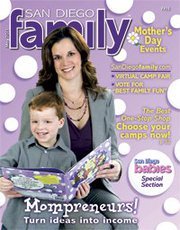Having a toddler is a completely different experience from having a baby. Once unable to do much more than smile, gurgle, and poop, toddlers are now into anything and everything. They choose their own meals when dining out, they start forming opinions of their own, and they’re like a new best friend. Unfortunately, they’re also very adventurous, and they leave no corner of the home un-explored when searching for fun. When your baby transforms into an active toddler, it’s time to really start child-proofing your home in earnest, both for your kids’ safety, and for the sake of your home.
Protecting Expensive Furniture
You may not think that designer sofas and chairs pose much of a risk to children, but that really depends upon the design of said furniture. luxury chairs, for example, could topple with the weight of an overly-adventurous toddler climbing over it, so it’s important to take precautions. The Consumer Product Safety Commission recommends anchoring unstable furniture to the floor to reduce the risk of injury. Of course, child-proofing is, ultimately, designed to keep young children safe within the home, keeping them out of danger. However, it’s important to remember that child-proofing actually goes both ways. Whilst it is important to protect our children, it’s also important to protect our home. Many of us will have worked hard to create a warm, welcoming environment that we can call ‘home’, and although our kids always come first, that doesn’t mean we should abandon our dreams for a well appointed house. Babies and small children have a tendency to drool, spit up, and poop without warning, leaving designer sofas and chairs vulnerable to damage. If you own designer furniture, such as sofas from Palliser or Moroni, for example, consider purchasing a slip cover or throw, or applying a spray product designed to act as a protective barrier against jammy hands!
Kitchen & Bathroom Considerations
Kitchens and bathrooms are two of the most dangerous rooms in the house for young children. With medicines, hair dryers, cleaning products, and hot water, among many other aspects, kids see these rooms as exciting playgrounds, whereas we see them as dangers waiting to happen! When child-proofing both rooms, there are a number of considerations when it comes to keeping your kids safe.
In the bathroom, firstly consider any medications you take, and where you keep them. This includes any prescription medications, along with over-the-counter treatments, such as regular painkillers, vitamin supplements, throat lozenges, and nasal sprays, for example. It’s best to employ a two-fold strategy when it comes to medicines. Not only is it a good idea to keep them in a lockable cupboard, but also high up where your kids cannot reach. The same goes for cleaning products, especially those that contain bleach or bleaching agents. The Rady Children’s Hospital San Diego reports that more than 50 percent of the 2.4 million people exposed to toxic substances in the home each year are under six years of age, so it’s vital that these chemicals are kept well out of reach of little ones. Keep in mind that this doesn’t just include cleaning products in their bottles, it includes those in use, too. If you put a cleaner down the toilet, ensure your kids cannot lift the lid. Install a toilet lid lock, and keep the bathroom door closed at all times. This can also prevent accidental drowning. Burns and scalds are another risk in bathrooms, but can be easily avoided by adding thermostats and keeping hair dryers, curling irons, and straighteners in locked drawers or cupboards.
In terms of child-proofing the kitchen, the advice largely mimics that for the bathroom. In summary, locks are your best friend! You may think that there’s no harm in your kids playing with some seemingly harmless ingredients in the kitchen, but some everyday foods can be very dangerous for babies. The San Diego Endoscopy Center lists sausage, canned vegetables, and honey as primary sources of botulism – a potentially deadly disease in children. Adding locks to your kitchen cupboards is one of the most important ways you can keep your kids safe in the home.
Dealing with Sharp Corners
If you’ve got a toddler who is still unsteady on their feet, sharp corners are the enemy. Tables, desks, countertops….anything a child can fall into, they will! Unfortunately, it’s usually the head that takes the brunt of the fall, and while sharp corners often produce a wound that looks worse than it is, it’s always best to get your kids checked out by a professional when suffering from a head wound. To prevent the risk of injury, corner protectors can be purchased from any DIY store which simply slip over the corners, creating a softer surface. However, always be sure to opt for plastic, rather than foam. The softness of the foam may seem like a good idea, but some children have been known to eat it, which can cause choking.
Child-proofing your home may seem like a big job, but it’s actually very simple, and it’s not something you need to do all at once. You know your kids better than anyone, so if you know that they haven’t yet discovered that the toilet lid opens, for example, there is no urgent rush to install a lock – just keep an eye on it. Child-proofing devices for the home are widely available, relatively inexpensive, and easy to install, so there’s no excuse for not protecting your children.


















